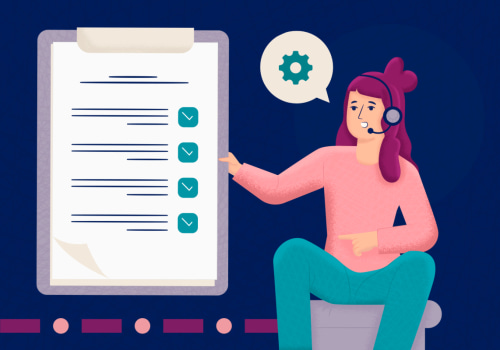Compliance auditing is an essential component of any business or organization's operations. It is necessary to ensure that the company is following regulations and industry standards, as well as providing a safe and secure workplace for employees. By having a comprehensive compliance auditing program in place, businesses can protect their assets and ensure that their operations are running smoothly. This article will provide an overview of best practices for compliance auditing, including what to consider when setting up a program, how to ensure compliance with regulations and industry standards, and how to use audit results to improve operations.
Reviewing Results
Finally, it is important to review the results of the audit on a regular basis.This can help ensure that any changes that have been implemented are being effectively followed. Reviews can be conducted internally by designated personnel or externally by an independent third-party auditor. During this review process, it is important to look for any areas of non-compliance, as well as any corrective actions that need to be taken. Additionally, any changes to the compliance program should be noted and monitored for effectiveness. The review process should also include a comparison of the current compliance level to the desired target level.
This comparison can help identify any areas of improvement or areas where additional resources may be needed. Additionally, reviews should include an evaluation of the processes and procedures that are in place to ensure continued compliance in the future.
Identifying Potential Risks
The first step in any compliance audit is to identify potential risks. This involves researching applicable laws and regulations, and conducting interviews with staff members to uncover any areas of concern. It is important to be thorough when researching and interviewing, as this will help to ensure that all potential risks are identified and addressed.When researching legal and regulatory requirements, it is essential to use reliable sources of information. This may include government websites, industry publications, and professional organizations. It is also important to stay up to date on any changes in the laws and regulations that may affect the organization. During staff interviews, it is important to ask open-ended questions to ensure that all possible risks are identified.
Questions should focus on areas such as compliance with regulations, internal processes, and employee training. Interviews should also be conducted with both managers and employees in order to gain a more complete picture of the organization's compliance practices. Identifying potential risks is an important part of any compliance audit. By taking the time to thoroughly research applicable laws and regulations, and conducting interviews with staff members, organizations can ensure that they are effectively auditing compliance in their organization.
Implementing Changes
Once the audit is complete, it is important to implement any necessary changes.This requires updating internal policies and procedures to ensure that all applicable laws and regulations are being followed, as well as training staff members on the new guidelines. It is important to prioritize these changes, as they can have a significant impact on the organization's operations. To ensure compliance with the new standards, it is also important to establish systems for monitoring and reporting progress. When implementing changes, it is important to communicate clearly with staff members and other stakeholders.
This includes explaining why the changes are necessary and how they will benefit the organization. It is also important to provide support for staff members who may need additional training or guidance. Additionally, it is essential to ensure that all necessary documents are in place and up to date. Finally, it is important to review the changes regularly to ensure that they are being properly implemented. This can involve conducting regular audits and assessing the effectiveness of the changes.
This can help identify any areas of non-compliance and allow for corrections to be made quickly.
Developing an Audit Strategy
Once potential risks have been identified, the next step is to develop an audit strategy. This should include a detailed plan of action, including specific timelines and objectives. The audit should also include an evaluation of internal policies and procedures, to ensure they are compliant with all applicable laws and regulations. An effective audit strategy should include a comprehensive review of all systems, processes, and controls to identify any potential weaknesses that could lead to non-compliance.Additionally, a plan should be established for regular monitoring of compliance activities and continued assessment of risks. The audit strategy should be tailored to the specific needs and objectives of the organization. It is important to consider the size and complexity of the organization, as well as the specific compliance requirements that need to be met. It is also important to ensure that the audit is conducted in accordance with all relevant laws and regulations. In order to ensure that the audit strategy is successful, it is important to have an experienced team of auditors who have the necessary skills and knowledge. They should be able to identify potential risks and develop strategies for mitigating them.
Additionally, they should be able to provide guidance on compliance issues, and recommend corrective actions when necessary. An effective audit strategy should also include a system for tracking progress, reporting on findings, and evaluating results. This will help organizations stay on top of their compliance efforts and ensure that they are meeting all applicable standards. In addition, regular communication with stakeholders should be included in the strategy to ensure that any changes or updates are communicated in a timely manner. Compliance auditing is an essential process for businesses of all sizes. By following best practices, such as identifying potential risks, developing an audit strategy, implementing changes, and reviewing results regularly, organizations can ensure they remain compliant with all applicable laws and regulations.







